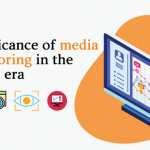Tracking a Likely Semiconductor Equipment Meltdown in 2023 Says The Information Network
A semiconductor “shortage” and plan for geographic self-sufficiency are catalysts for and oversupply of chips in 2023 and a meltdown of the equipment market, according to the report “The Global Semiconductor Equipment: Markets, Market Shares, Market Forecasts,” recently published by The Information Network.
In 2021, the semiconductor industry is being influenced by the need for capacity increases during the post-Covid recovery. The industry is also exhibiting solid demand for semiconductor drivers such as 5G, cloud computing, gaming, EVs.
The semiconductor “shortage” and sanctions against China are catalysts for producing an oversupply of semiconductors and an equipment meltdown in 2023. A significant semiconductor capacity expansion is underway as current fabs expand and new fabs are planned.
“In 2021, equipment will increase due to a large capex spend of $25.2 billion by TSMC (TSM), an increase of 49.2%. Fellow Taiwan foundry United Microelectronics (UMC) plans to increase capex spend by 38.8%,” noted Dr. Robert N. Castellano, president of The Information Network. “As new fabs in 2021 and 2022 are built (detailed later in this article), additional significant equipment purchases will be made in 2022 and 2023, reaching a tipping point in 2023.”
A push by the Biden administration to invest $50 billion on domestic manufacturing facilities to improve US self-sufficiency and reduce reliance on Asia has initiated a course that will result in oversupply and capacity expansion:
· Intel, seeking US government handouts, is spending $20 billion to build two new chip plants in Arizona.
· TSMC and Samsung both plan to build factories in the US along with Intel, which is investing $23 billion to improve and build facilities in the US.
· GlobalFoundries will invest over $4 billion to expand its Singapore, to make around 1.2 million wafers a year, 450,000 more than it can currently produce.
· The EU plans to form an alliance with EU-based companies like ST Microelectronics, NXP, Infineon and ASML to move away from foreign. German chipmaking company, Bosch, recently opened a $1.2 billion factory that it hopes will help ease semiconductor supply constraints in the automotive sector.
· Korea plans to spend roughly $450 billion in its endeavor to build the world’s biggest chipmaking base.
“We are tracking 29 fabs could produce as many as 2.6 million wafers per month: 15 fabs are foundry facilities with capacities ranging from 30,000 to 220,000 wafers per month, and 4 are memory fabs with higher capacities ranging from 100,000 to 400,000 wafers per month,” added Dr. Castellano.


